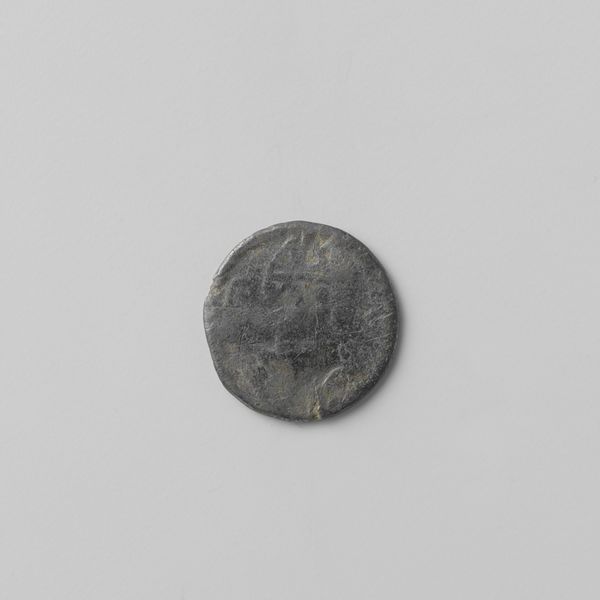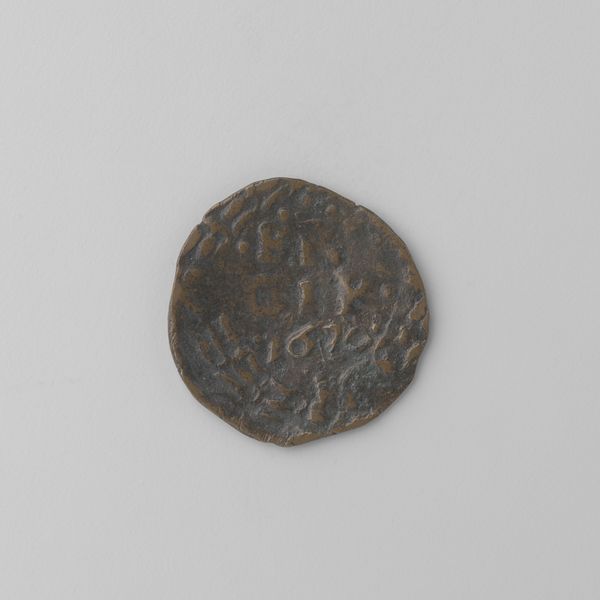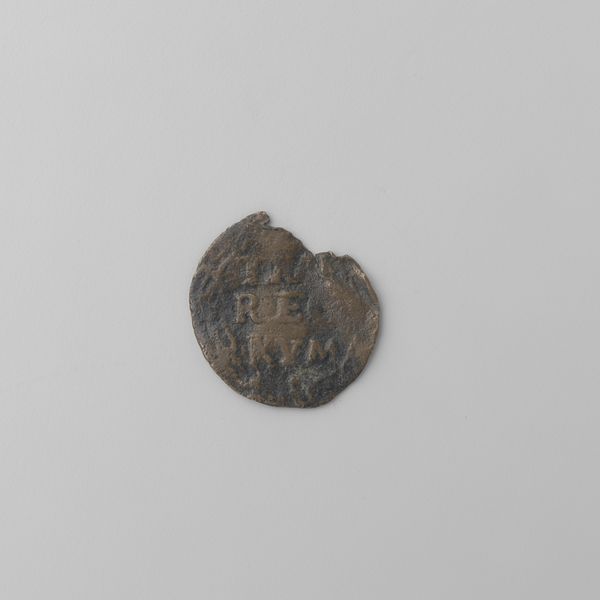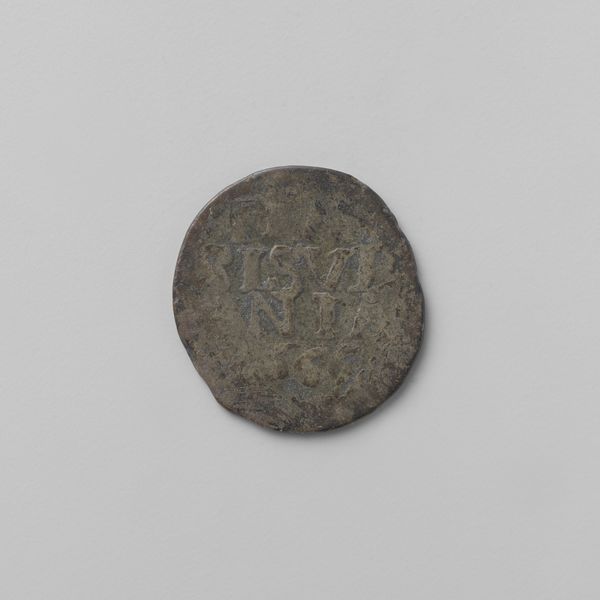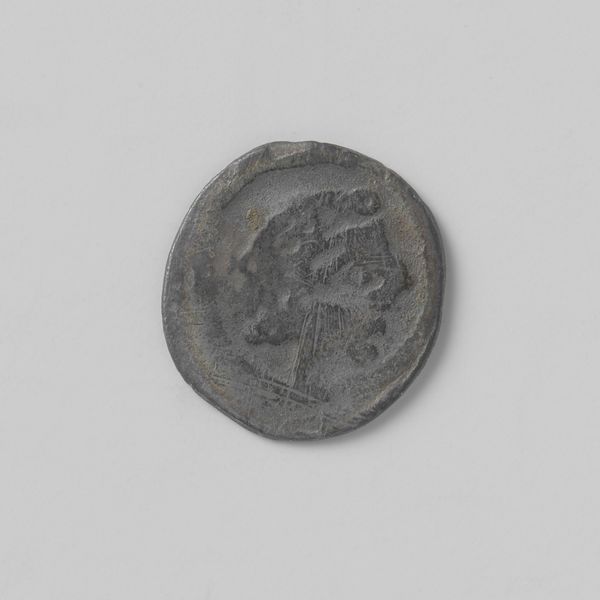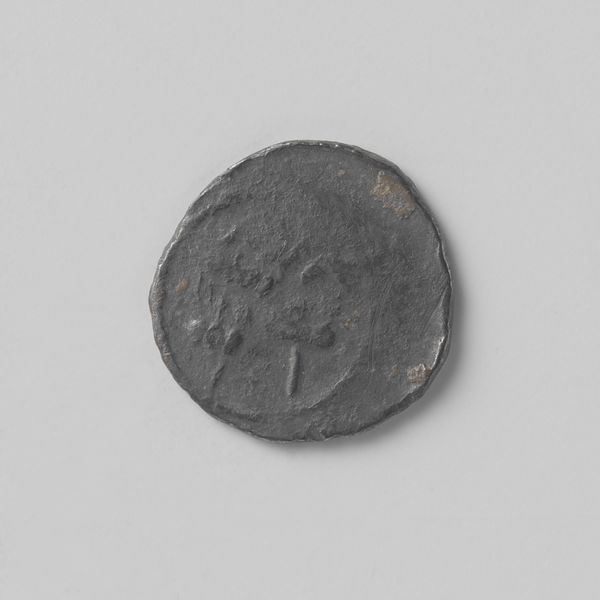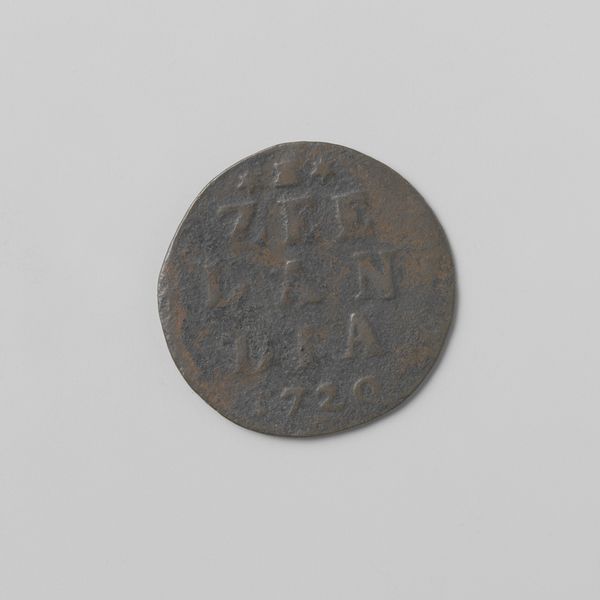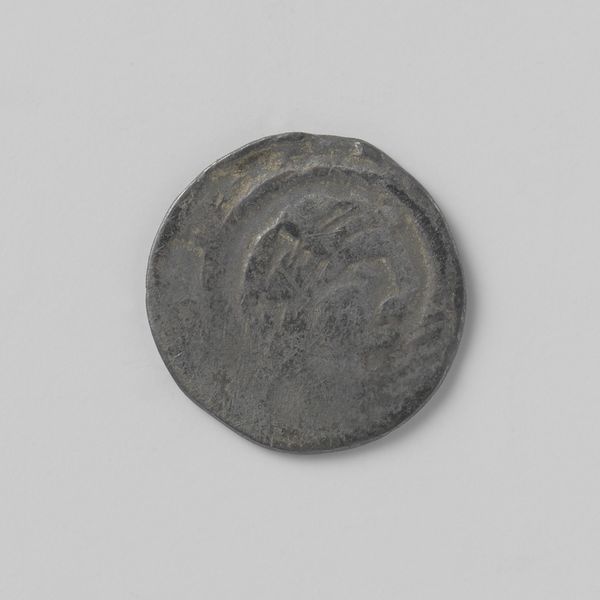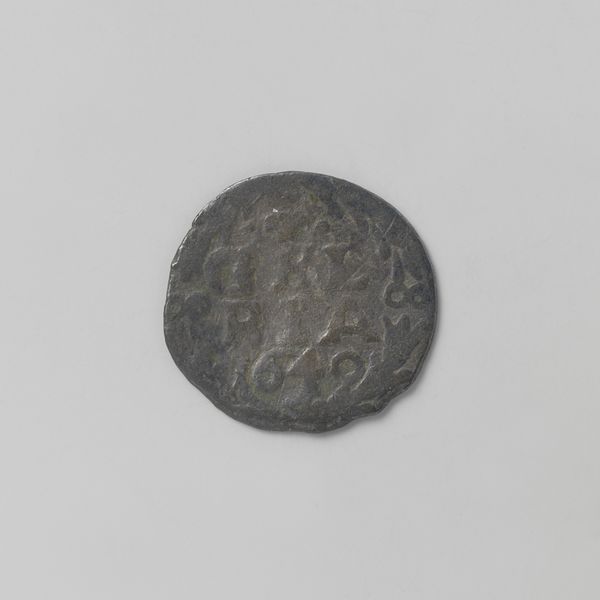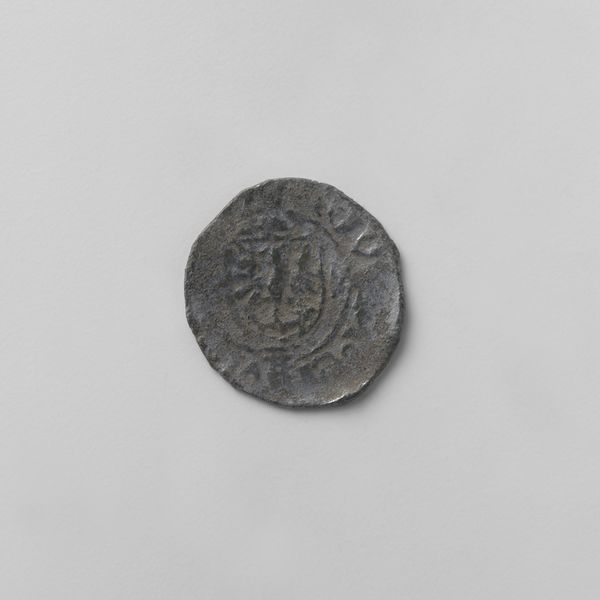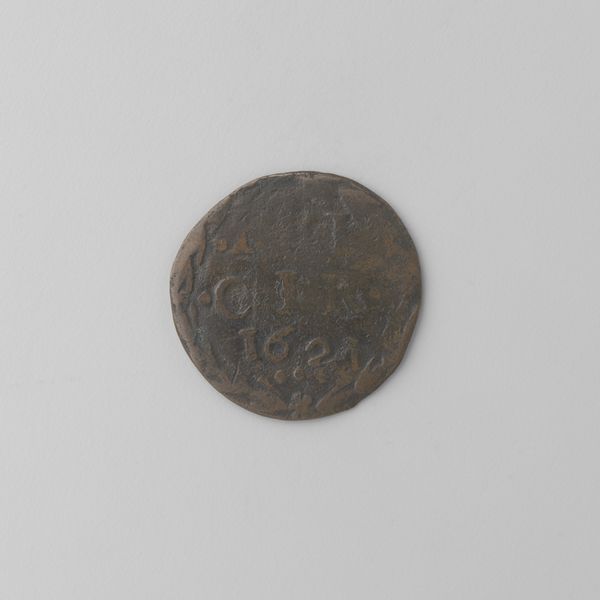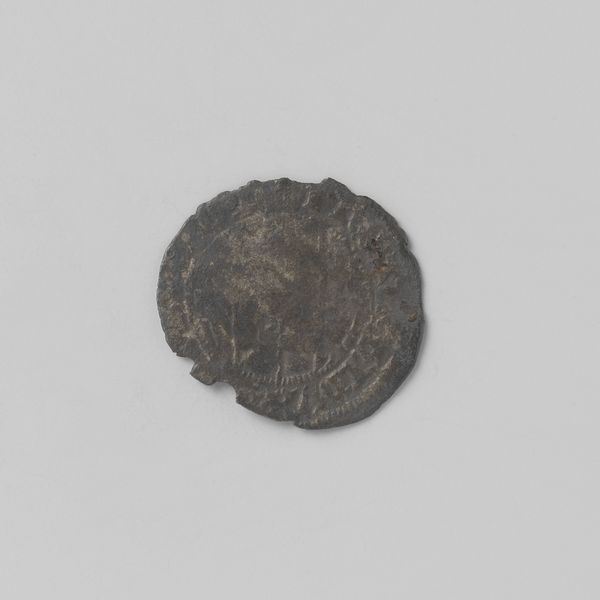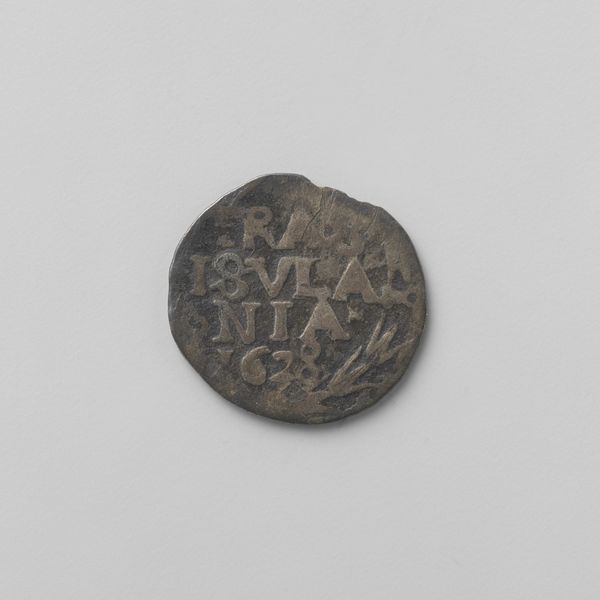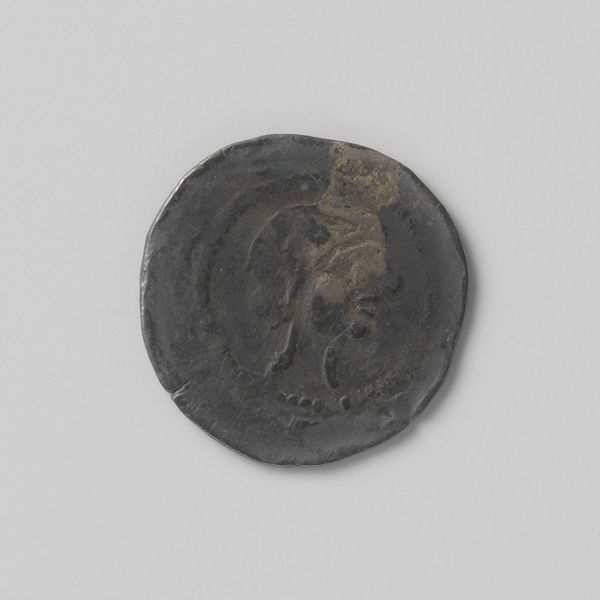
metal, sculpture
#
portrait
#
round shape
#
natural stone pattern
#
circular oval feature
#
baroque
#
3d printed part
#
rounded shape
#
metal
#
sculptural image
#
curved arc
#
3d shape
#
sculpture
#
white focal point
#
regular shape
#
miniature
Dimensions: diameter 2.0 cm, weight 1.21 gr
Copyright: Rijks Museum: Open Domain
This copper coin, a Reckheimse duit, was created by Ferdinand van Aspremont-Lynden, heer van Reckheim around the mid-17th century. Its material is key: copper was a common, relatively inexpensive metal, reflecting the coin's modest value. Consider how this coin was made. Molten copper would have been cast into a blank, then struck with dies to impress the design – in this case, the lord's insignia. This process, while mechanized to a degree, still relied on skilled labor: the die cutters who produced the stamps, and the workers who operated the presses. The coin’s worn surface speaks volumes, each scratch and dent a testament to its journey through countless transactions. A humble object like this, easily overlooked, offers a tangible link to the economic realities of the past. It reminds us that even the smallest artifact can reveal the larger forces of society at work.
Comments
No comments
Be the first to comment and join the conversation on the ultimate creative platform.
